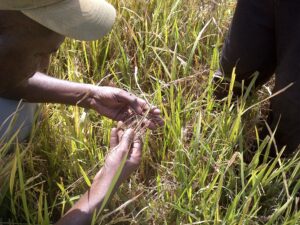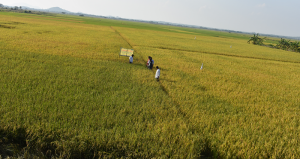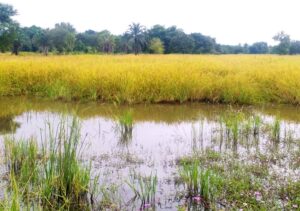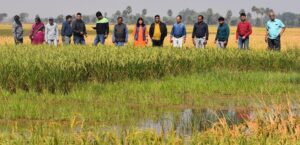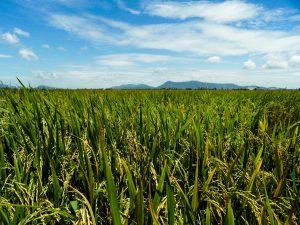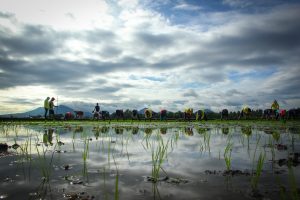
The availability of water is a fundamental requirement for crop growth. In many places, rainfall is scant or erratic and this can diminish crop yield and strongly affect the livelihoods of farming households. To cope with this problem, farmers can use irrigation, the artificial supply of water to increase crop production. Because irrigation takes away some of farming’s climate risk, farmers who irrigate are more likely to further invest in their agricultural production—by using more fertilizer, for example. It is therefore particularly in irrigated areas where we find the intensive agriculture associated with the Green Revolution.
There are striking regional differences in the use of irrigation (map). According to the data sources used for this map, India and China each have about 20% of the world’s irrigated lands, and about 68% of the world’s irrigated area is in Asia. Although determining exact figures on this scale is impossible, there is agreement about Asia’s large share of global irrigation. For example, the recent Comprehensive Assessment of Water Management in Agriculture states that “over 60%” of the world’s irrigated land is in Asia, and that about half of this land is used for rice.
According to the Comprehensive Assessment, there are currently about 300 million hectares of irrigated land worldwide—double the area in 1960. About 80 million hectares (27%) of this irrigated land is used for rice production. Because rice receives more water than other crops, it uses some 39% of the world’s irrigation water.
Asia also has a large share—about 48%—of the world’s crop land. But this alone does not explain the difference in the extent of irrigated areas: about 28% of Asia’s crop land is irrigated, versus 9% for the rest of the world. Only 5% of the crop land in Africa is irrigated. Much of this is in very dry areas such as the lower Nile Valley; unlike in Asia, there is very little irrigation in zones with 500 to 1,000 mm annual irrigation.
The low level of irrigation in Africa raises the questions of whether there should be more investment in irrigating the crop lands of that continent, and whether Green-Revolution-type intensification could take place there without it.
There are many very dry areas in the world (less than 250 mm of annual precipitation), but only a small proportion of this land is used for crop production. Where it is used to grow crops, it tends to be irrigated. For example, in Egypt, more than 90% of agricultural land is irrigated. However, only 30% of the world’s irrigated area is in areas with less than 500 mm of rain per year. Another 30% is in areas with between 500 and 1,000 mm per year. The remainder is in areas with higher rainfall. The majority of irrigated rice land in Asia receives more than 750 mm of rain per year. In these areas, irrigation provides either additional water during the rainy season and the opportunity for dry-season crops.
Detailed geographic data on the extent of crop land and irrigation are an important source of information for studies of agriculture and development. Here, we combined the two most recent global irrigation data sources available. One is based on maps of irrigation schemes (Siebert et al), which may include areas that could be, but may in fact not be, irrigated, the other is based on satellite data (Thenkabail et al).
The relative strengths and weaknesses of these two sources are open to debate, but they have at least one limitation in common: they show only the presence or absence of irrigation, not how much water is currently available or will be in the future. This is important because the future of irrigation is uncertain in many areas. Groundwater is being depleted in many important rice growing areas such as the Punjab in India. Tube-well irrigation, which has boomed in India and Bangladesh, has become much less profitable because of the increased cost of fuel. Demand is also growing for non agricultural water use, such as for clean drinking water from wealthier and larger urban populations (see the Comprehensive Assessment for a recent in-depth analysis).
So, we need to know more. More importantly, though, we need rice production technologies that enable farmers to use water more efficiently and rice varieties that are more tolerant of drought—not only in Africa, where irrigation is scarce, but also in more heavily irrigated Asia.
_________________________________________
Dr. Hijmans is a geographer in the IRRI Social Sciences Division.

